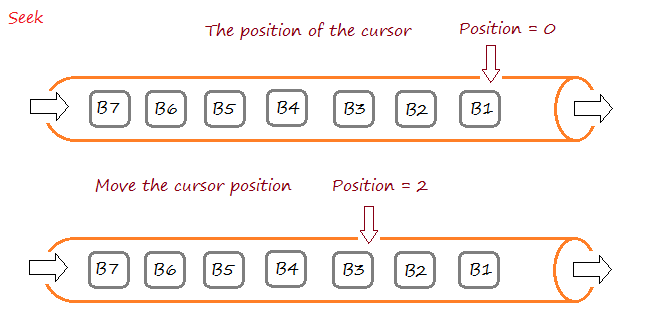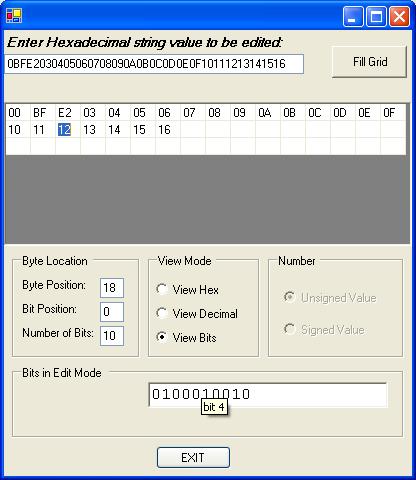Opens a binary file, reads the contents of the file into a byte array, and then closes the file. Jul 03, 2017 Dim docContent As Byte = File.ReadAllBytes(path:=CachedFilePath) I am trying to read binary files into a Byte array. I get a 'System.OutOfMemoryException'. I believe that I need to setup a loop and write chunks to the byte array. Some vb code would be greatly appreciated. How to read a binary file into 2D array. Use C# to read a binary file such as an image file into a byte. C#.NET Read Binary File Into Byte. The goal is to read a binary file in a var and post the contents to a. VB and VBScript operate on a byte array. Net - Binary Files. Reader and Binary. Home topics visual basic 4 / 5 / 6 insights how to read a file in vb - part 2 - vb6, binary mode (get) Share your developer knowledge by writing an article on Bytes. How to read a file in VB - Part 2 - VB6, Binary mode (Get).
-->The My.Computer.FileSystem object provides the ReadAllBytes method for reading from binary files.
To read from a binary file
Use the
ReadAllBytesmethod, which returns the contents of a file as a byte array. This example reads from the fileC:/Documents and Settings/selfportrait.jpg.For large binary files, you can use the Read method of the FileStream object to read from the file only a specified amount at a time. You can then limit how much of the file is loaded into memory for each read operation. The following code example copies a file and allows the caller to specify how much of the file is read into memory per read operation.
Robust Programming
The following conditions may cause an exception to be thrown:
The path is not valid for one of the following reasons: it is a zero-length string, it contains only white space, it contains invalid characters, or it is a device path (ArgumentException).
The path is not valid because it is
Nothing(ArgumentNullException).The file does not exist (FileNotFoundException).
The file is in use by another process, or an I/O error occurs (IOException).
The path exceeds the system-defined maximum length (PathTooLongException).
A file or directory name in the path contains a colon (:) or is in an invalid format (NotSupportedException).
There is not enough memory to write the string to buffer (OutOfMemoryException).
The user lacks necessary permissions to view the path (SecurityException).

Do not make decisions about the contents of the file based on the name of the file. For example, the file Form1.vb may not be a Visual Basic source file.
Verify all inputs before using the data in your application. The contents of the file may not be what is expected, and methods to read from the file may fail.

Vb6 Read File
See also
-->How To Download A Binary File
By default, the DataReader loads incoming data as a row as soon as an entire row of data is available. Binary large objects (BLOBs) need different treatment, however, because they can contain gigabytes of data that cannot be contained in a single row. The Command.ExecuteReader method has an overload that will take a CommandBehavior argument to modify the default behavior of the DataReader. You can pass SequentialAccess to the ExecuteReader method to modify the default behavior of the DataReader so that instead of loading rows of data, it will load data sequentially as it is received. This is ideal for loading BLOBs or other large data structures. Note that this behavior may depend on your data source. For example, returning a BLOB from Microsoft Access will load the entire BLOB being loaded into memory, rather than sequentially as it is received.
When setting the DataReader to use SequentialAccess, it is important to note the sequence in which you access the fields returned. The default behavior of the DataReader, which loads an entire row as soon as it is available, allows you to access the fields returned in any order until the next row is read. When using SequentialAccess however, you must access the fields returned by the DataReader in order. For example, if your query returns three columns, the third of which is a BLOB, you must return the values of the first and second fields before accessing the BLOB data in the third field. If you access the third field before the first or second fields, the first and second field values are no longer available. This is because SequentialAccess has modified the DataReader to return data in sequence and the data is not available after the DataReader has read past it.
When accessing the data in the BLOB field, use the GetBytes or GetChars typed accessors of the DataReader, which fill an array with data. You can also use GetString for character data; however. to conserve system resources you might not want to load an entire BLOB value into a single string variable. You can instead specify a specific buffer size of data to be returned, and a starting location for the first byte or character to be read from the returned data. GetBytes and GetChars will return a long value, which represents the number of bytes or characters returned. If you pass a null array to GetBytes or GetChars, the long value returned will be the total number of bytes or characters in the BLOB. You can optionally specify an index in the array as a starting position for the data being read.
Example
The following example returns the publisher ID and logo from the pubs sample database in Microsoft SQL Server. The publisher ID (pub_id) is a character field, and the logo is an image, which is a BLOB. Because the logo field is a bitmap, the example returns binary data using GetBytes. Notice that the publisher ID is accessed for the current row of data before the logo, because the fields must be accessed sequentially.